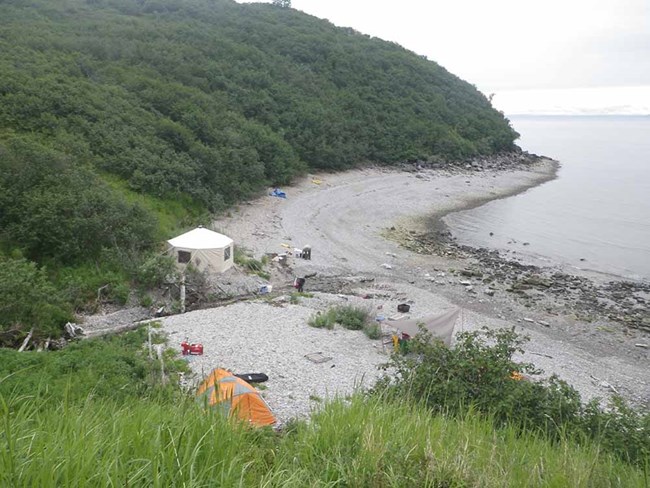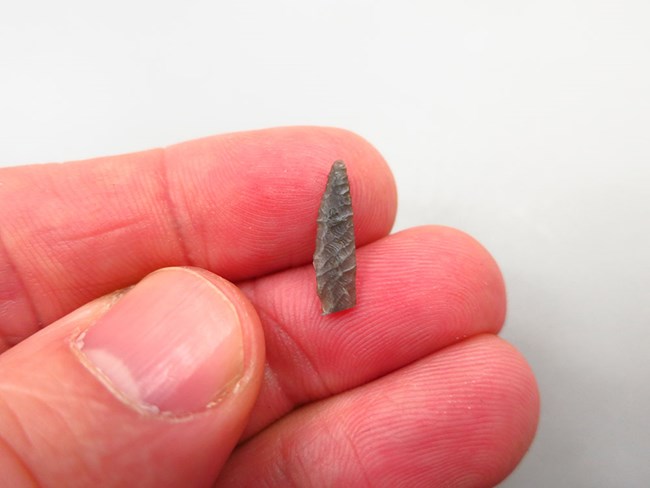Last updated: June 24, 2019
Article
Iyatayet Revisited

NPS/Andy Tremayne
The Iyatayet site in western Alaska was designated as one of the most significant archaeological sites in Alaska. Work there beginning in the 1940s helped define two major cultural periods in Alaska's prehistory, the Norton tradition (1,600-2,500 yrs ago) and the Denbigh Flint Complex (3,000-4,000 yrs ago). In both Norton and Denbigh we see the development of specialized human adaptations to marine environments and the invention of key technologies that would figure prominently in the lives of subsequent residents across the Arctic, things like the ulu knife, oil lamps, pottery, and ground slate harpoon heads. The initial and major discoveries at Iyatayet, however, happened many decades ago and raised a number questions that had never been fully answered. This new research based on recent fieldwork and using modern analytical methods provides insights about the site and the activities that took place there thousands of years ago.
This site is a National Historic Landmark, a designation that commemorates and protects the nation's most significant historic sites. The research findings from Iyatayet expand on related sites found in several national park units in Alaska (Cape Krusentern National Monument, Noatak National Preserve, Gates of the Arctic National Park and Preserve, Kobuk Valley National Park, Katmai National Park and Preserve, and Lake Clark National Park and Preserve), that also contain sites with Norton and Denbigh components. Taken together, all these sites illustrate a broad picture of how people during these periods lived.

NPS/Jeff Rasic
Iyatayet revisited: A report on renewed investigations of a stratified Middle-to-Late Holocene coastal campsite in Norton Sound, Alaska
Abstract
The multicomponent middle-to-late Holocene coastal site of Iyatayet, at Cape Denbigh, Alaska, originally excavated by J. L. Giddings in the early 1950s, was key to developing a culture-historical sequence for northwest Alaska. We revisited the site in 2012 and 2013 to collect data to refine the occupation chronology and to test models of maritime-resource intensification. Our results show the Denbigh Flint complex occupations at Iyatayet are younger and briefer than previously believed. Gaps of 1,000 years separate the Denbigh, Norton, and Thule occupations, suggesting reduced use of eastern Norton Sound during these periods. Artifacts and faunal remains from each component indicate reduced mobility and increased focus on marine resources following the Denbigh period, but Norton occupants hunted the same suite of marine prey as the later Thule, demonstrating they were was equally proficient at foraging from the sea.
Tremayne, A. H., C. M. Darwent, J. Darwent, K. A. Eldridge, and J. T. Rasic. 2018. Iyatayet revisited: A report on renewed investigations of a stratified Middle-to-Late Holocene coastal campsite in Norton Sound, Alaska. Arctic Anthropology 55 (1): 1-23.
